Starting seeds indoors in winter is a good way to extend your growing season and provide enough time for long-season crops to mature. But how do you make sure your seedlings get enough light? And do you really need a grow light?

In this guide, we’ll introduce you to some of the most commonly used light sources for indoor seeds and what makes each a good choice (or a bad choice) for indoor seedlings. We’ve also included some helpful tips for using grow lights that will have you growing healthy and lush seedlings like a pro.
Jump to:
What kind of light do seedlings need?

Sunlight provides full-spectrum light to seedlings and plants grown outdoors. But if you are keeping plants inside, it’s important to replicate the natural growing conditions of plants as much as possible. This means ensuring that your plants receive the right type of light for optimal growth.
Full-spectrum light contains both red and blue light – the two types of light that are critical for seedling growth. Red light supports the growth of leaves and flowers, but too much red light will result in spindly seedlings. Blue light works to regulate plant growth, supports leaf development, and produces stocky, well-formed seedlings, although too much of this light will lead to stunted growth.
As you can see, it’s important that you provide your seedlings with a balance of both red and blue light in order to grow healthier plants. The right grow lights for you will emit both types of light and offer other benefits too.
Other factors to consider when selecting a grow light include:
- Light duration
Most seedlings grow best when exposed to 14 to 16 hours of light, followed by an 8-hour period of darkness. Plugging your grow lights into an automatic timer can regulate your lights for you and cut down on your plant care tasks. Some grow lights come with an automatic timer as well. - Light intensity
Light intensity is determined by the wattage of your grow light, as well as how close your lights are positioned above your seedlings. For best results, grow lights should be hung about 2 to 4” above your seedlings’ leaves. Some grow lights come with adjustable chains that allow you to get the height of your light just right.
4 common light types for seedlings
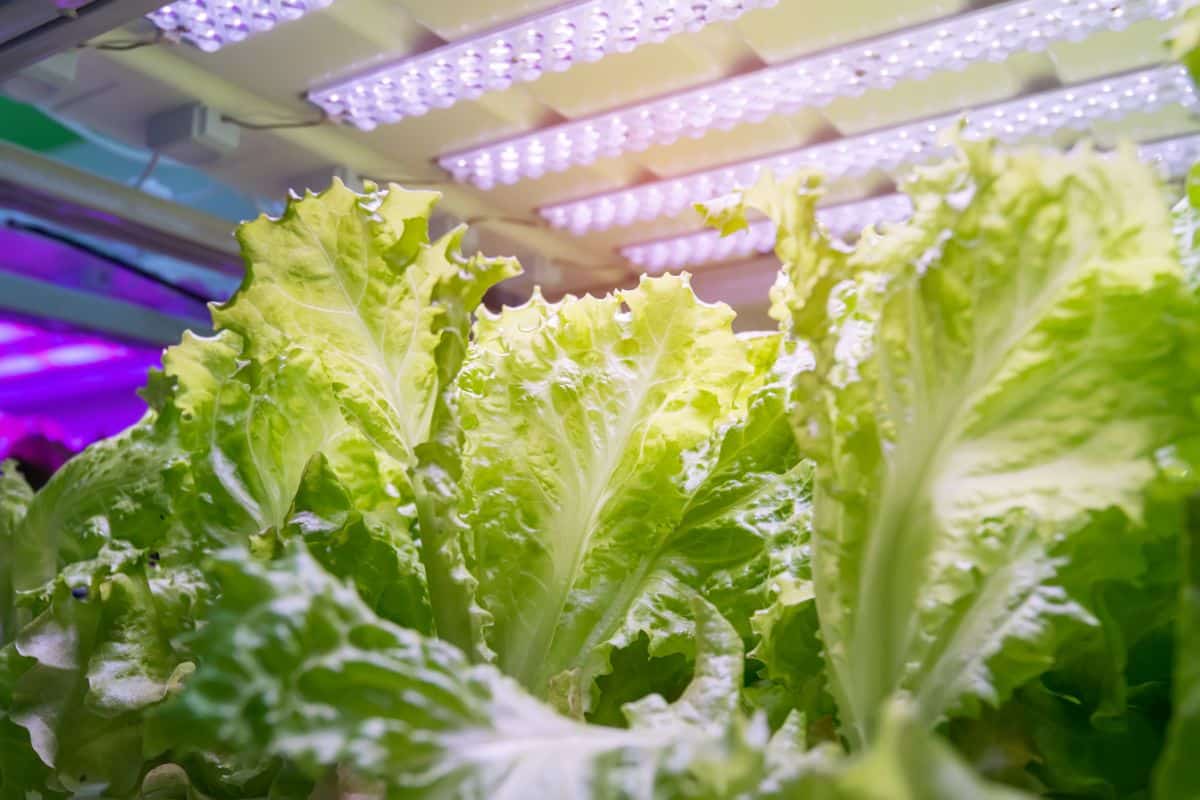
Can you grow seedlings in a bright window? Maybe, or maybe not!
Read up on the top light sources for seedlings below before deciding which one is best for you.
LED grow lights
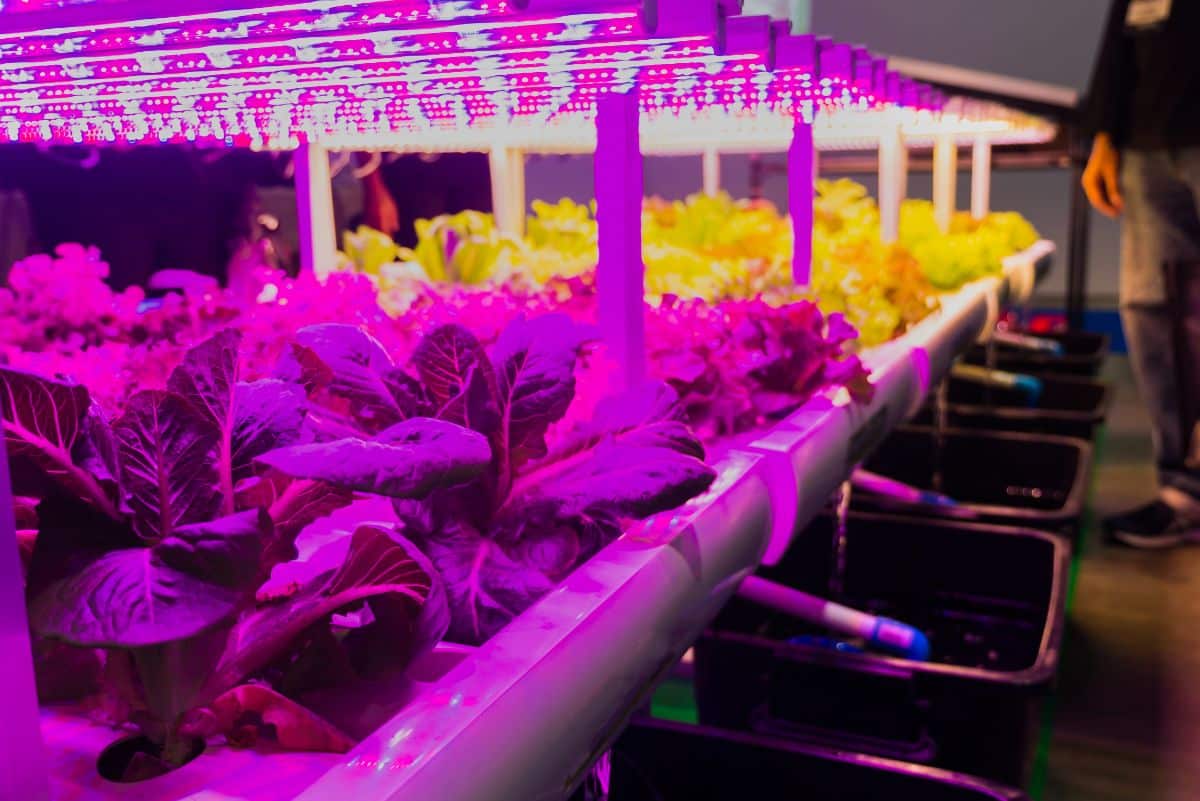
Light-emitting diodes (LEDs) are relatively new to the scene, but they are one of the top choices for growing seedlings.
Unlike fluorescent lights, LED lights emit a smaller range of light colors, but they produce the light types plants need: red light and blue light. LED lights are the most energy efficient grow lights you can buy, and they are also lightweight. However, they are more expensive.
Since their development, LED lights have been growing in popularity and are easy to find at most garden centers and home improvement stores. Part of the reason people love them so much is that they don’t contain any mercury, and they are sturdy, so you don’t need to worry about breaking them. However, they do produce a purple-tone light that not everyone finds appealing.
Pros
- More energy efficient than other grow lights
- Bulbs last up to 5 times longer than fluorescent tubes
- Glass-free bulbs are sturdy and don’t shatter
- Don’t contain mercury gas
- Lighter and easier to install than fluorescent fixtures
- Easy to find
- Contain red and blue light seedlings need
Cons
- More expensive
- Produce purple light some gardeners may find unattractive
Best LED grow lights to try
If you want to try out LED lights in your grow room this year, here are some of our top picks.
· Sunco LED Grow Light
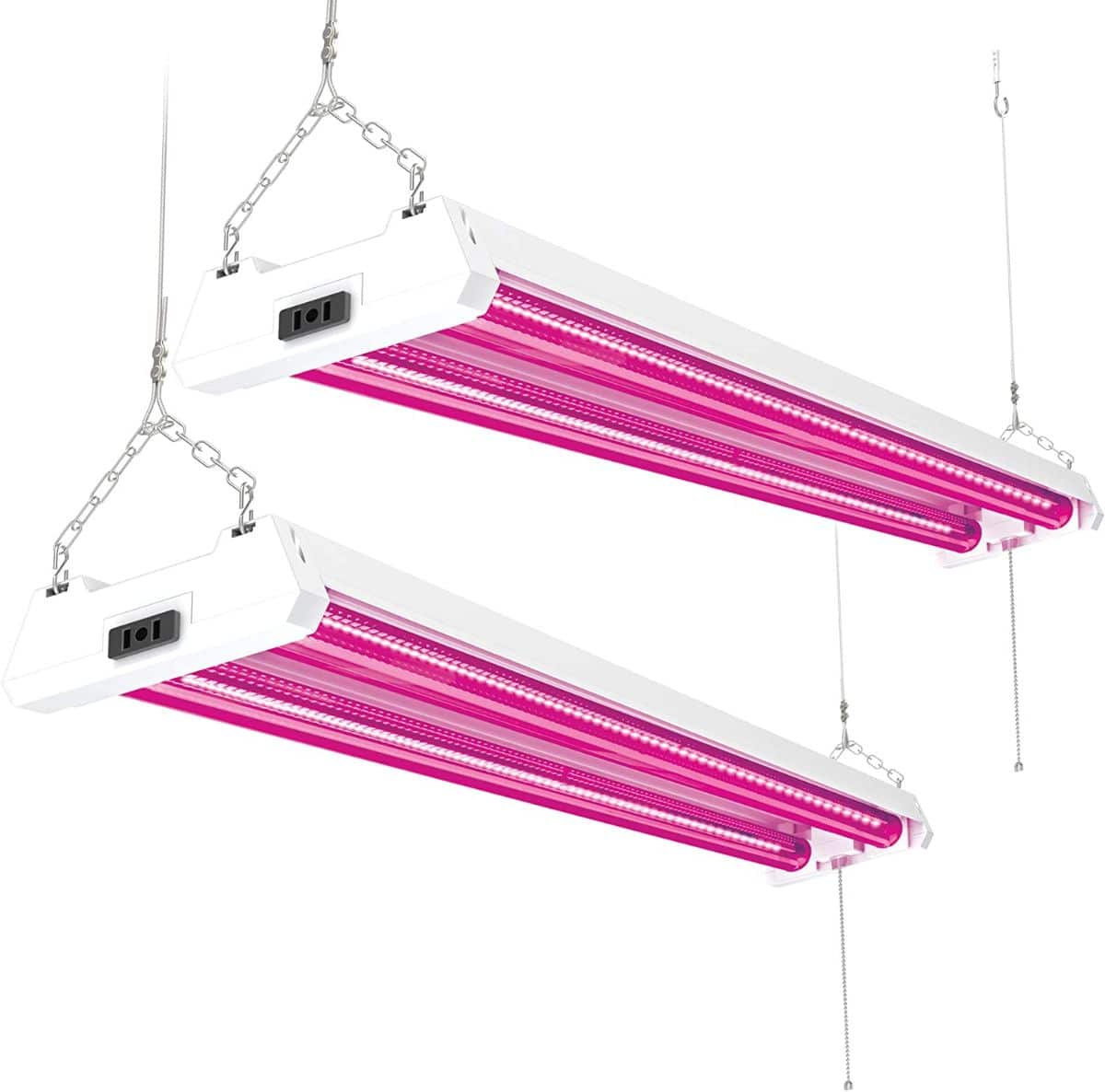
- Top Rated Linkable Full Spectrum LED Grow Light for Indoor Farming
- ✅ FULL SPECTRUM - Promotes plant growth during all stages! It can improve flowering/blooming, cloning, vegging and seeding stages. Serious growers know full spectrum fixtures can also accelerate the...
- ✅ SAVE ENERGY - LED grow lights consume less power than traditional grow lights so you can save energy on large grow applications or your hydroponic garden. This 40W LED is a 260W equivalent. LEDs...
These classic grow lights look like shop lights, but they contain energy-efficient LED bulbs. Emitting both blue and red light, these lights come in packs of 2, and fixtures can be connected to each other for larger grow setups.
· Hytekgrow LED Grow Light
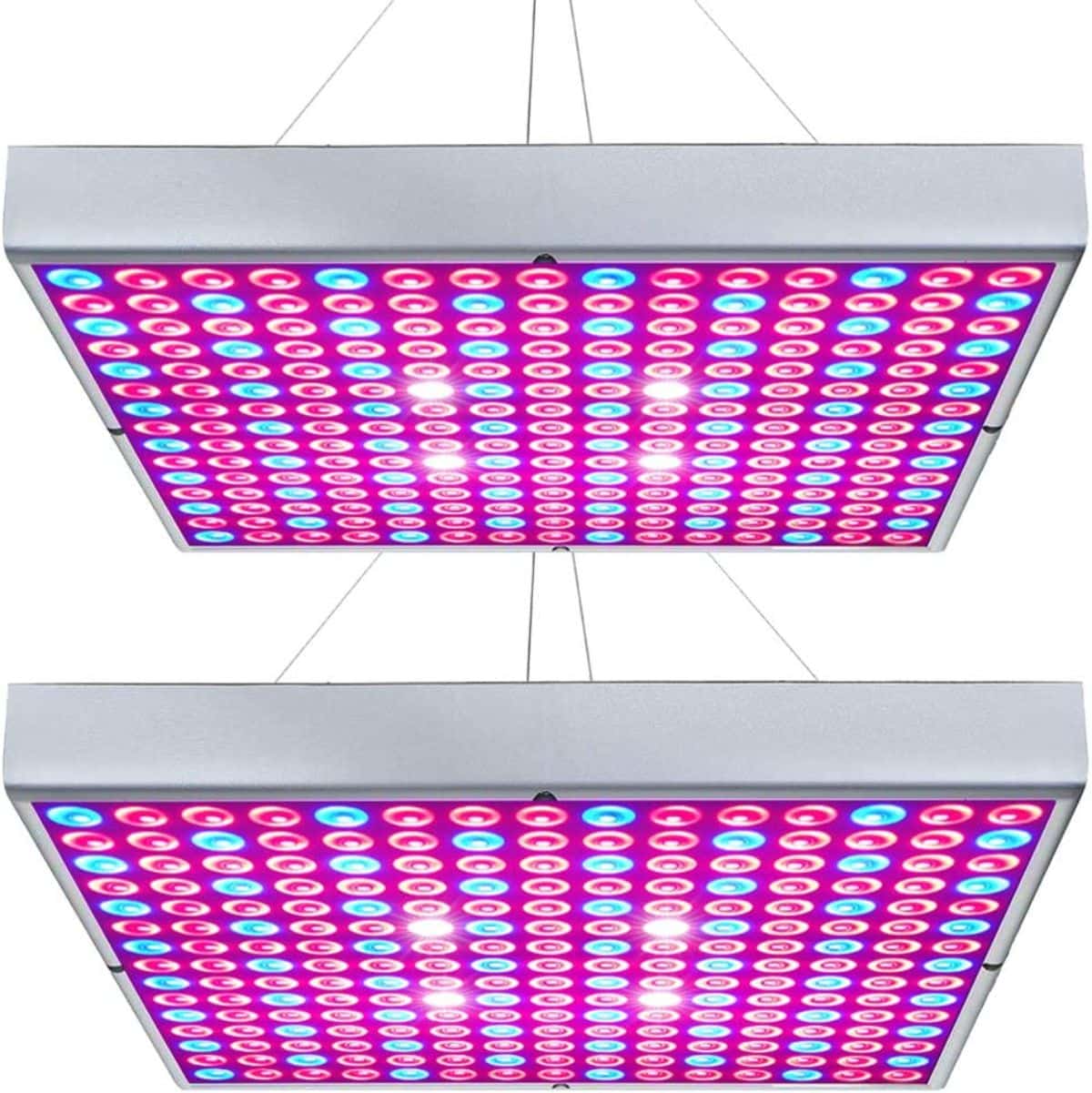
- 🌹[Classical Full Spectrum] Compact grow light that puts out the needed light, includes 163pcs (620-660nm)+58pcs blue leds(450-460nm) +4pcs white...
Another solid pick, these lights also come in packs of two, and they are wider than many other grow lights on the market. Their size ensures that seedlings on the edges of your grow racks will receive just as much light as the seedlings located at the center.
· SZHLUX LED Grow Light
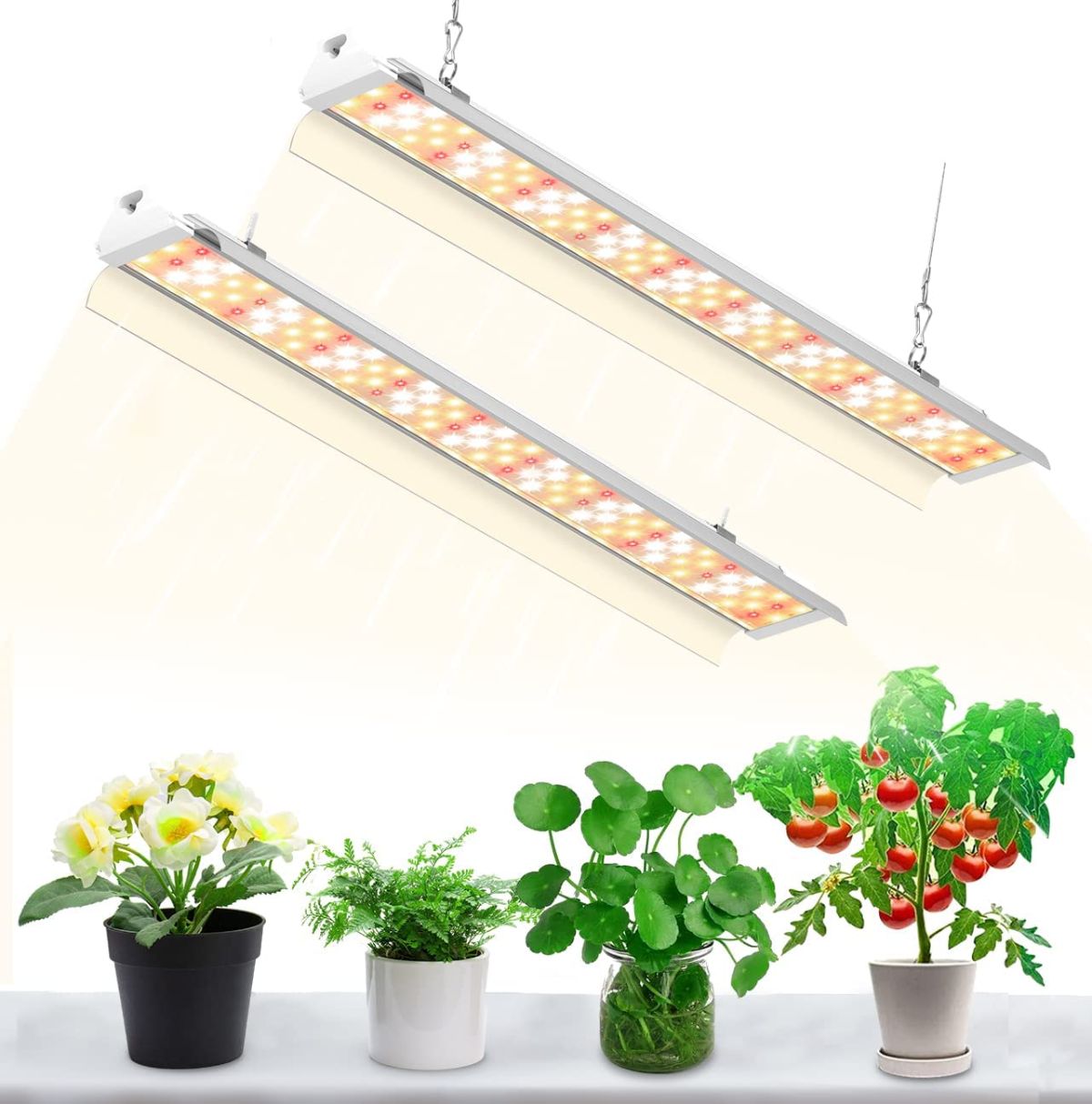
- Full Spectrum with IR - The SZHLUX grow light 2ft with full spectrum provide the most reasonable grow light wave based on the ratio of absorption for...
These lights have expandable reflectors to direct the light straight towards your seedlings. The full spectrum lights also come in different wattages and have fully linkable designs if you need to expand your setup.
Fluorescent grow lights
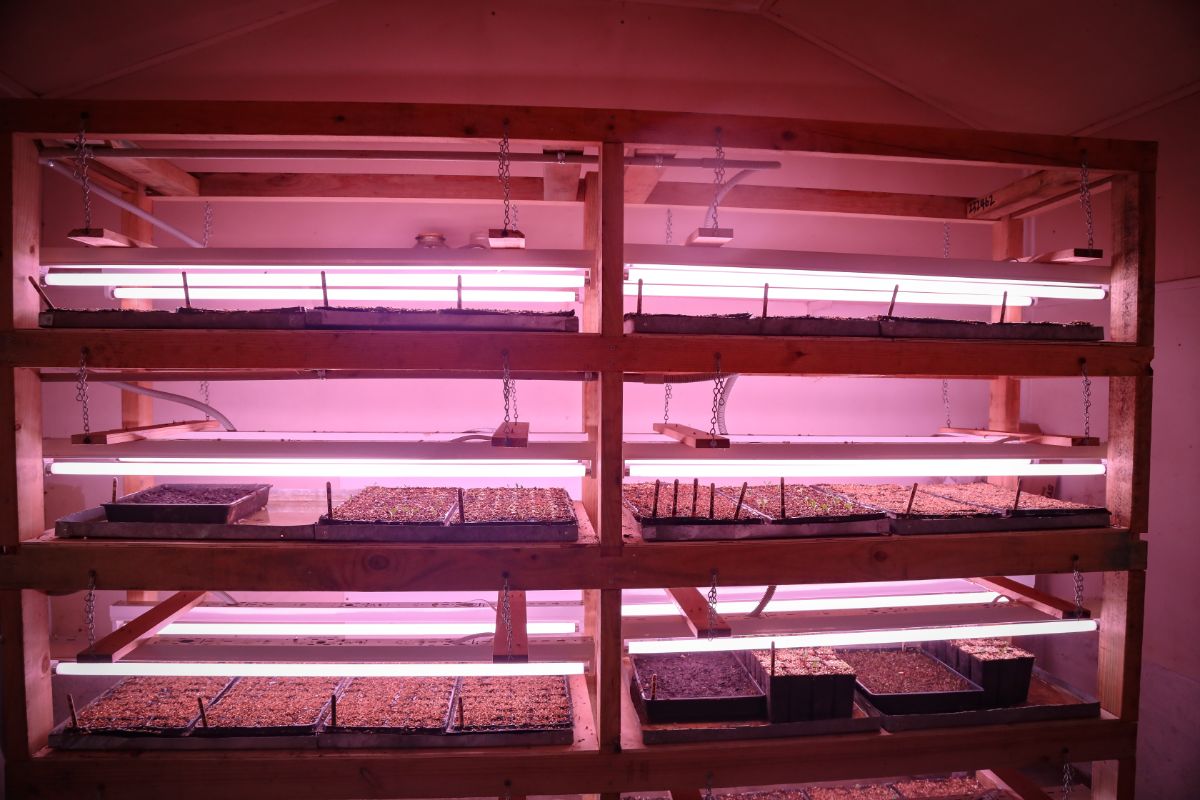
Fluorescent lights are another popular grow light variety for seeds… and it’s no wonder why. These grow lights are easy to find, and they are available online and at most home improvement stores. Even better, fluorescent grow lights are 2 to 3 times more energy efficient than incandescent bulbs, and they’re also budget-friendly, making them one of the cheapest options for home growers.
Fluorescent light fixtures are usually composed of a metal light hood and one to two fluorescent bulbs. Fluorescent bulbs are glass tubes containing mercury vapor and other gasses. Fixtures may also come with an expandable reflector hood to reflect light back down at your seedlings to maximize the amount of light your plants receive.
One of the drawbacks of fluorescent fixtures is that these lights can be bulky and difficult to hang. You may be able to suspend them from grow racks with chains, or you can build a simple DIY grow light stand. Additionally, because fluorescent bulbs contain mercury and other gasses, it’s important to handle these lights with care to avoid damaging the glass tubes.
Fluorescent bulbs generally fall into 3 main categories:
- Cool white bulbs
- Warm white bulbs
- Full-spectrum bulbs
Cool white bulbs produce a lot of blue light but have little to no red light. As a result, these bulbs will produce seedlings that are stocky and stunted.
Warm white bulbs are the opposite and emit an abundance of red light but no blue light. Seedlings grown under these lights alone will be tall but spindly.
Full-spectrum bulbs are the happy medium between the two and exude both red and blue light. Seedlings grown with full-spectrum bulbs will develop well. However, these bulbs are less energy efficient and may emit more heat, which could stress out seedling leaves.
For home growers interested in working with fluorescent lights, opt for full-spectrum bulbs or use a fluorescent grow light fixture that has space for two bulbs. Using a warm and a cool white bulb at the same time will give you well-balanced lighting and will support your seedlings’ growth just as well as full-spectrum bulbs.
When shopping for fluorescent lights, you may also see them labeled as T5, T8, or T12. These names refer to the diameter of the bulbs, with T5 bulbs measuring ⅝” diameter, T8 bulbs measuring at 8/8” or 1” diameter, and T12 bulbs measuring at 12/8” or 1 ½” diameter. T5 and T8 bulbs aren’t just more slender than T12, they are also more energy efficient, and they last longer.
Pros
- Budget-friendly; less expensive than LED lights
- More energy efficient than incandescent bulbs
- Easy to find
- Full-spectrum bulbs and two-bulb fixtures with warm and cool white bulbs meet seedlings’ light needs
Cons
- Bulky; can be heavy and difficult to hang
- Contain toxic mercury gas, which can cause issues if glass tubes break
- Not as energy efficient as LED bulbs
Best fluorescent grow lights to try
If you want to try out fluorescent lights in your grow room this year, here are some of our top picks.
· Durolux Fluorescent Grow Lighting System

- 5000 Lumes - 50W Full Light output - Powerful Grow Lighting System with low profile.
This grow light has space for two energy-efficient T5 bulbs, and it has a reflector hood to maximize your light output. These lights can also be connected to each other to expand your seedling setup if you’re growing a lot of seeds.
· Lithonia 2-Bulb Fluorescent Shop Light Fixture
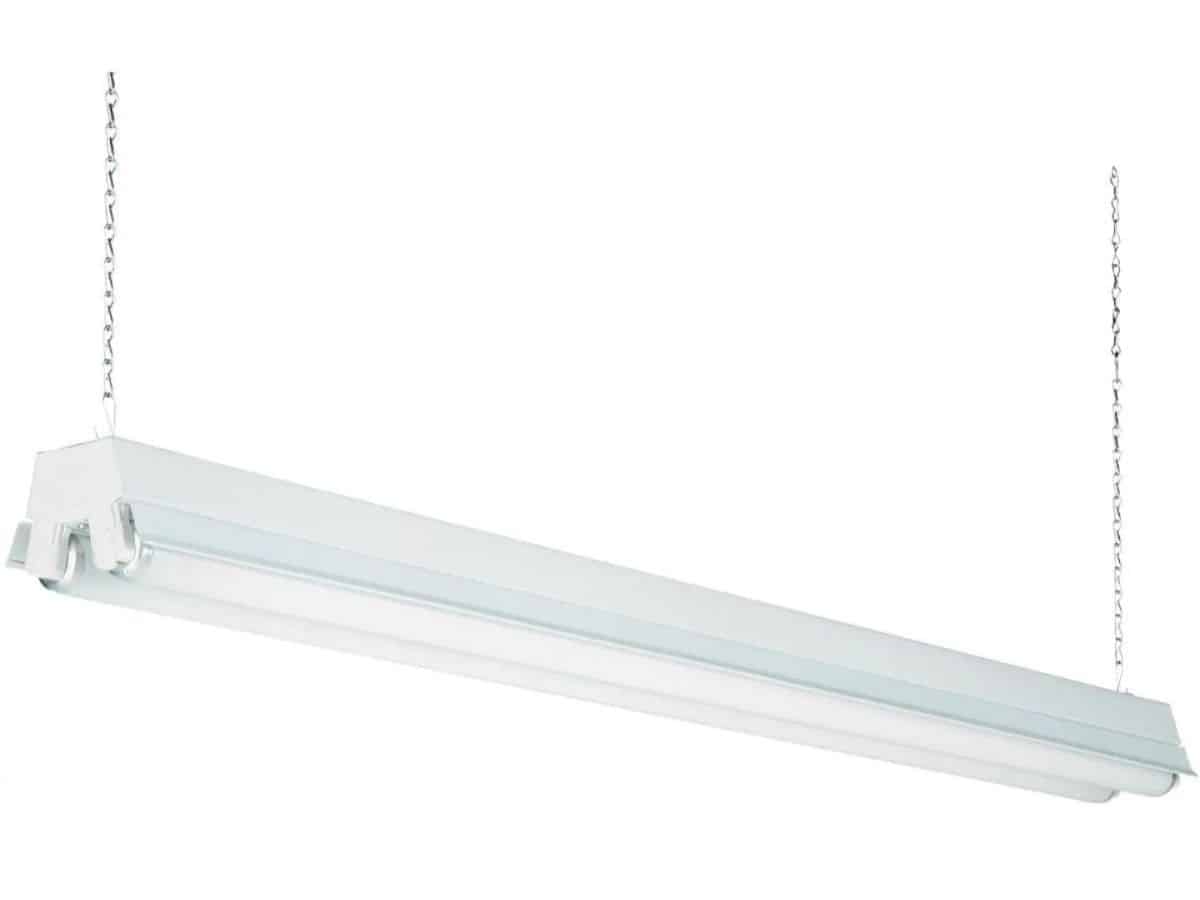
This classic fluorescent shop light can be used in your garage or in your indoor grow room. The double bulb design fits T12 bulbs, and it’s one of the least expensive grow lights you can find.
Incandescent lights
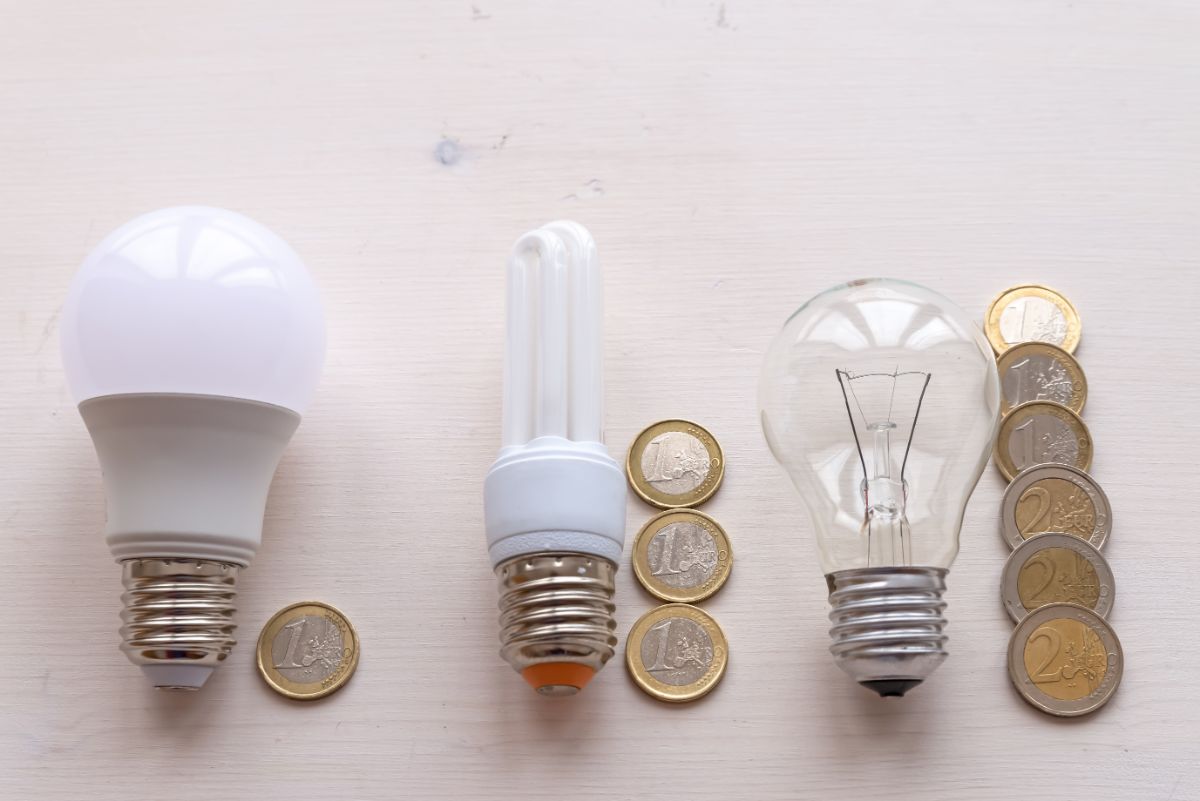
Incandescent light bulbs use to be standard in table lamps and other indoor lighting. They have also functioned as grow lights in the past as well; however, they are not ideal for this purpose.
Incandescent lights produce a fair amount of red light, but they are insufficient sources of blue light. Using them to start your seedlings will result in weak and spindly stems and unhealthy plants.
These lights also produce heat and placing them near your plants can cause leaf scorching and stress. What’s more, incandescent lights are less energy efficient than fluorescent and LED bulbs, so they should be avoided in grow room setups.
Pros
- Budget-friendly; less expensive than LED lights
- Easy to find
Cons
- Don’t produce enough blue light for seedlings
- Can get warm and burn plant leaves
Sunlight
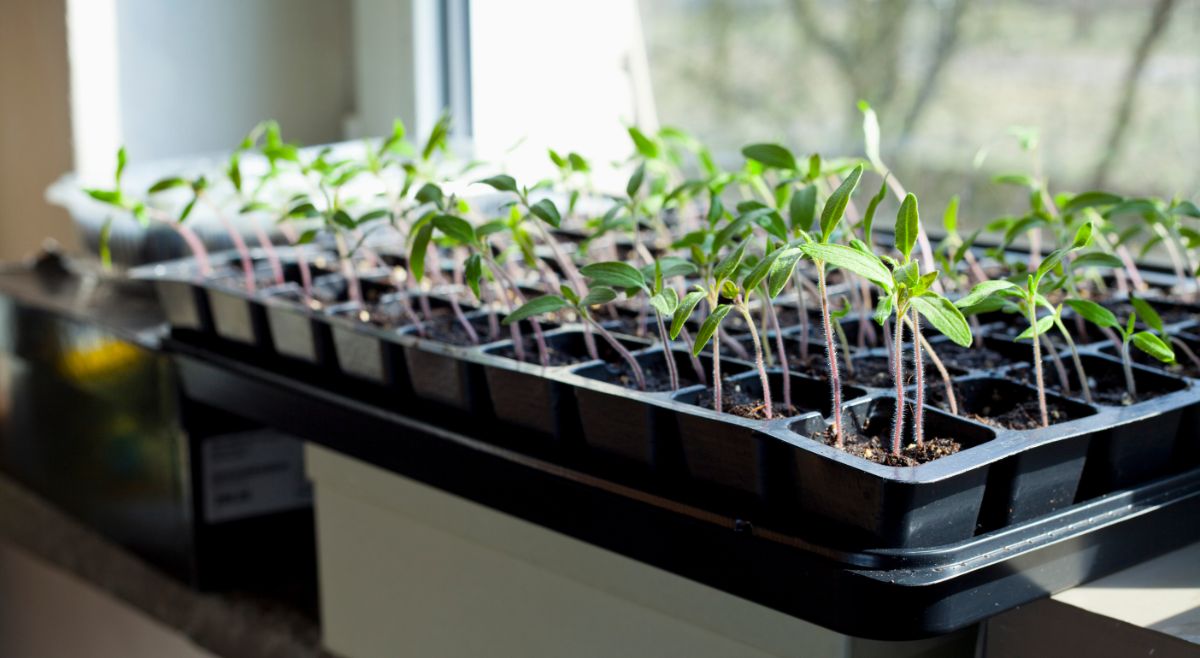
Many home gardeners try to start their seedlings in a brightly lit window. But is this even possible?
Unless your window is south-facing and receive at least 14 hours of bright sun daily, indoor sunlight is generally insufficient for seedlings. Starting your seeds in a window usually results in poor growth and thin seedling stems that stretch towards the light.
Relying on sunlight is, of course, the most energy-efficient and cost-effective way to grow plants, but poor lighting can end up costing you money if you grow poorly developed plant starts.
If you’re still on the fence, you may want to test whether your window gets enough light by trying out a few seeds in a pot and seeing how they grow. Just be prepared to add a grow light if your seeds look stunted or spindly.
Even if you don’t start your seedlings in a window, you can cut down on energy costs by transitioning your seedlings outdoors in spring. Just make sure temperatures are warm enough for your tender seedlings, and always harden off your plants to avoid transplant shock.
Pros
- Free!
- Energy-efficient and eco-friendly
Cons
- Most windows don’t receive adequate light to support seedling growth
Tips on growing seedlings under grow lights
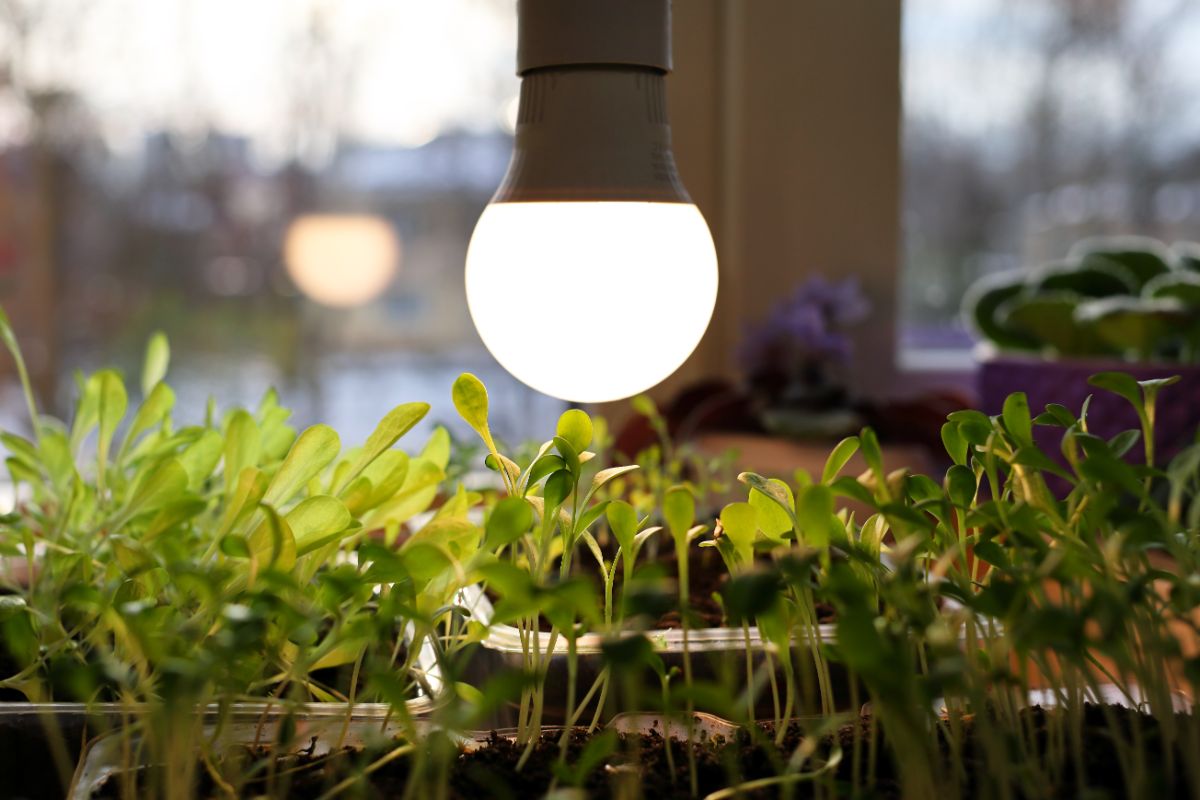
After you’ve picked out your grow light, following these simple tips to get the most out of your new light.
- Position your light at the right height.
Lights hung too far away from your seedlings won’t produce enough light and will result in leggy plants. To support proper growth, hang your lights about 2 to 4” above your plants’ leaves.
- Use a timer.
Leaving your grow lights on all the time may stress out your seedlings, waste electricity, and cause other issues. Instead, only leave your grow lights on for 14 to 16 hours a day. Plugging your lights into a timer can automate this process for you.
- Rotate your seedlings.
Grow lights may emit more intense light towards the center of the bulbs and less intense light towards the edges. Rotating your seedling trays and pots once a week will help to even things out and prevent plants from stretching and leaning towards the light.
- Replace fluorescent bulbs as needed.
Fluorescent bulbs will darken towards their ends as they age, resulting in less light output. Check your lights from time to time and replace them as needed. And remember to dispose of your old, fluorescent bulbs properly. Home improvement stores will often offer light recycling free of charge.
- Clean your lights monthly.
Dust, dirt, and grime can build up on your grow light bulbs and reduce light output. Wiping your lights down with a soft cloth once a month can boost light levels and make your grow lights more energy efficient.
- Protect your seedlings from hot bulbs.
Make sure your bulbs don’t get too warm. To test, shield your plants' leaves with your hands and feel the heat from your bulbs. If your hand begins to feel warm, your light is too close to your plants.
Frequently asked questions
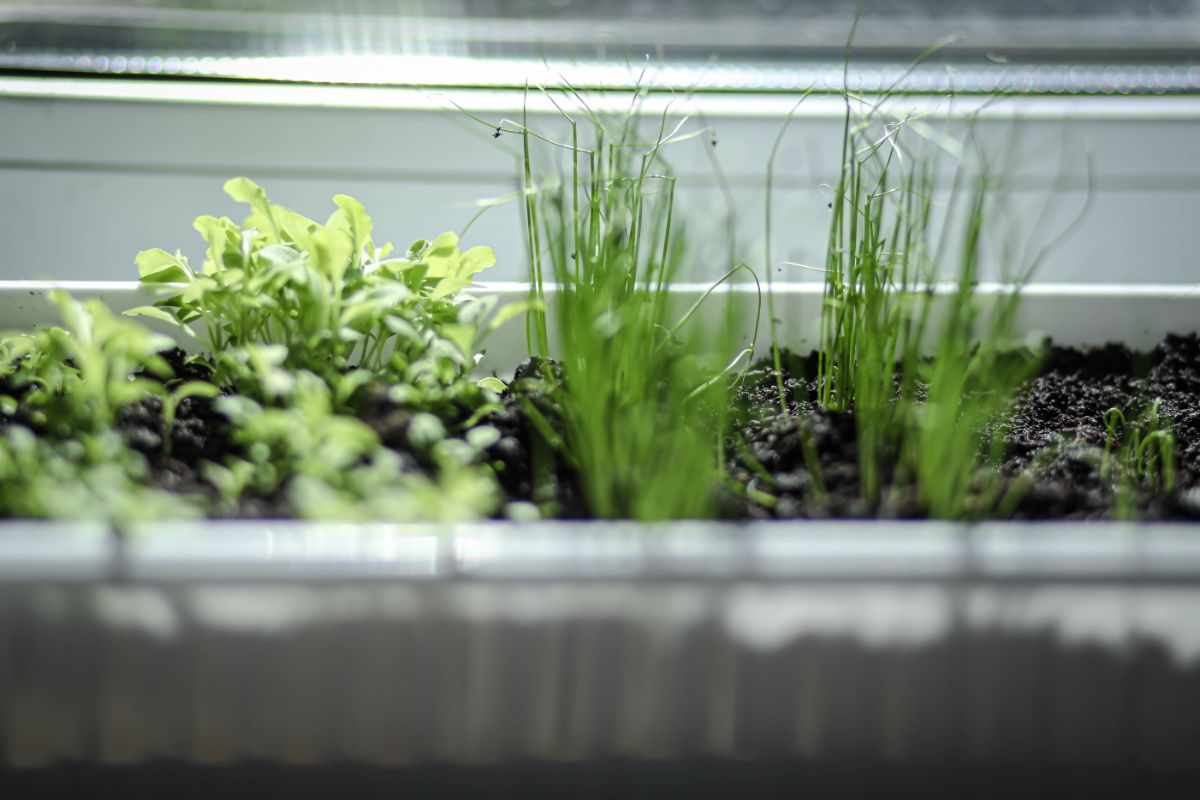
What is the best kind of grow light for seedlings?
Fluorescent and LED lights are the best choices for homegrown seedlings. These lights are more energy efficient than incandescent bulbs, are easy to find, and they emit the right balance of light for young seedlings.
How do I know if seedlings are getting too much light?
Too much bright light can cause leaf scorching and crispy leaves on your seedlings. Leaves may also turn yellow and may or may not have visible green veins, although this symptom can have other causes too.
How do I know if seedlings are getting too little light?
Seedlings grown in low light will get leggy and spindly. Stems may discolor and turn pale as they begin to stretch towards the light. As growth continues, stems can bend or break under their own weight, and leaves may be stunted as well.
What is the best wattage for seedlings?
A good rule of thumb is to provide your seedlings with about 20 to 40 watts per square foot.
What is considered leggy?
A leggy seedling will look pale and stretched out and may have an inch or more between leaf sets, even when seedlings are still small. As the seedling continues to grow, stems are usually too weak to support the plants’ leaves, and the stem may flop over or break off.
Can leggy seedlings be saved?
If legginess isn’t very severe, you may be able to fix your seedlings by increasing the amount of light your plants receive and burying long stems underground when you transplant. Very leggy seedlings are generally unsalvageable and should be composted as they will likely grow into weaker plants that are less likely to thrive.
Summary
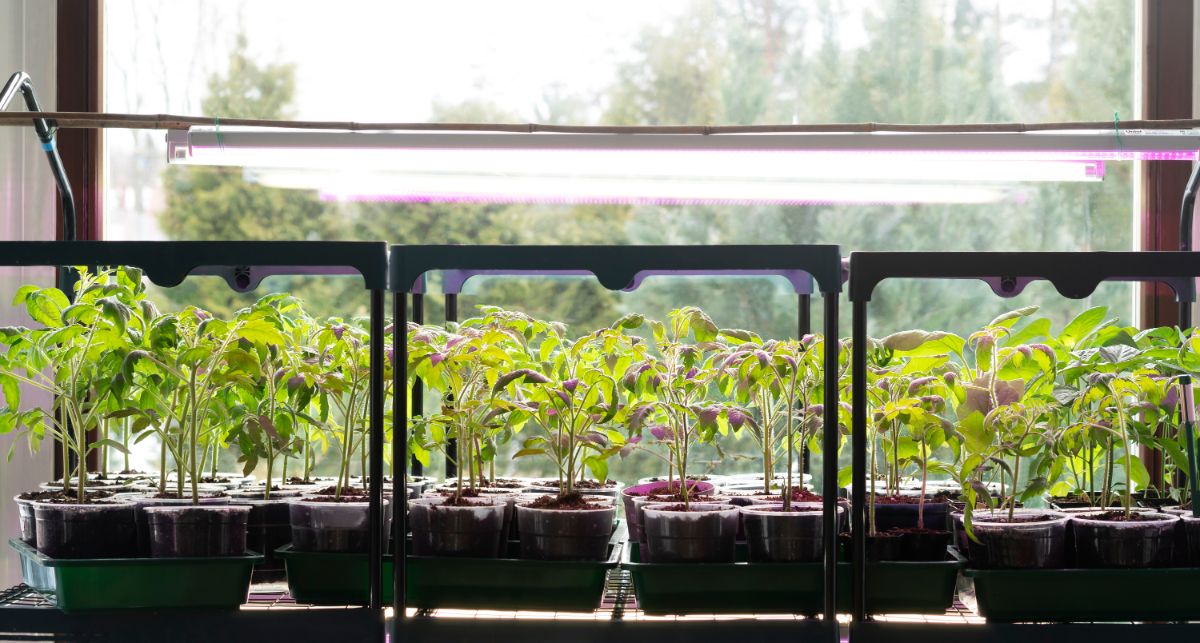
Picking the right grow light for your seedlings can be one of the most intimidating parts about starting your garden. The good news is that this task isn’t as complicated as it may at first appear!
LED and fluorescent grow lights are both excellent choices for new seedlings. So the decision should really come down to your budget, your available growing space, and how many seedlings you plan on growing. Once installed, both of these light types will provide your plants with the light spectrum they need for proper growth.
After you’ve gotten your grow room set up with your brand-new lights, you’ll be ready to plant. If you’re still looking for the best seeds to start indoors this spring, check out our guide on the best unique plants to grow in your home garden for a bit of gardening inspiration!

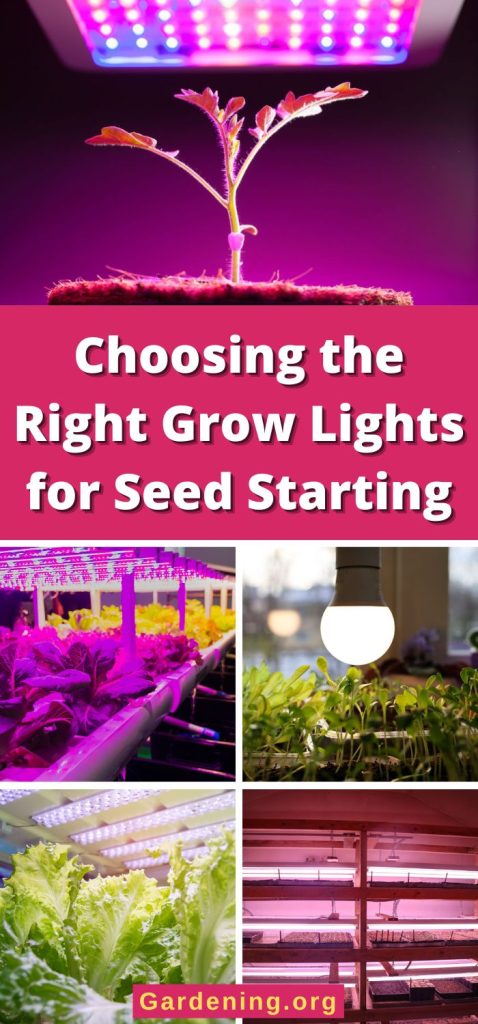

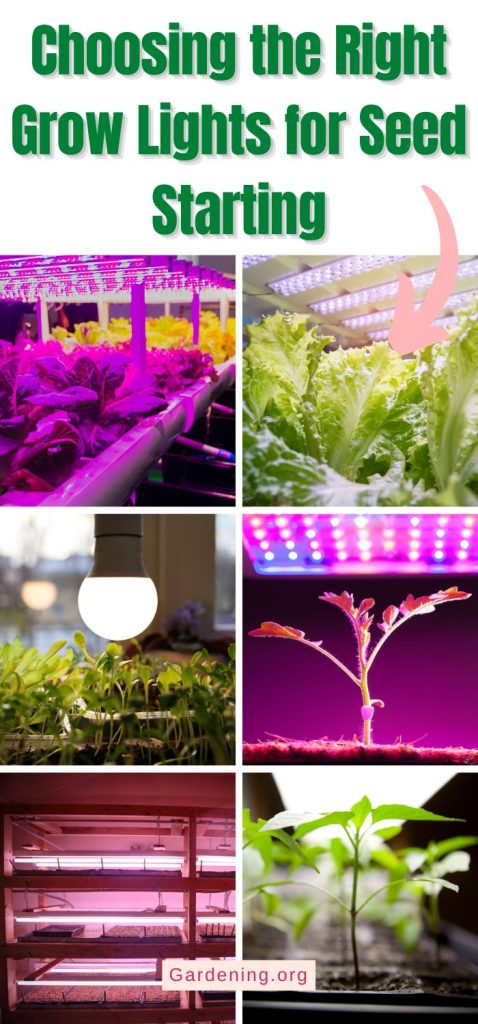
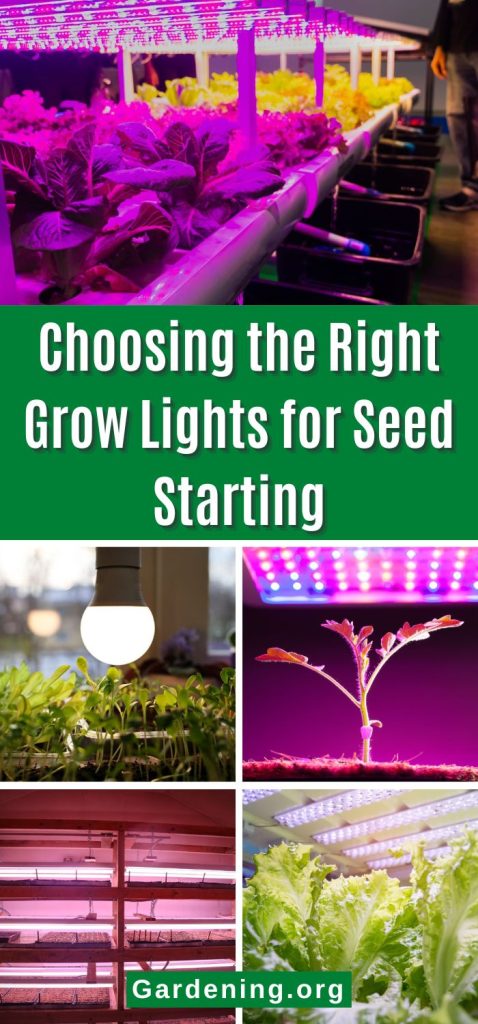








Jason Sullivan
I think the information provided on LED lights here may be a little outdated. Full spectrum LED white light LED's are available and affordable. LED spectrum is much broader than the other lights mentioned but I understand that this article is focused mainly on seedlings.